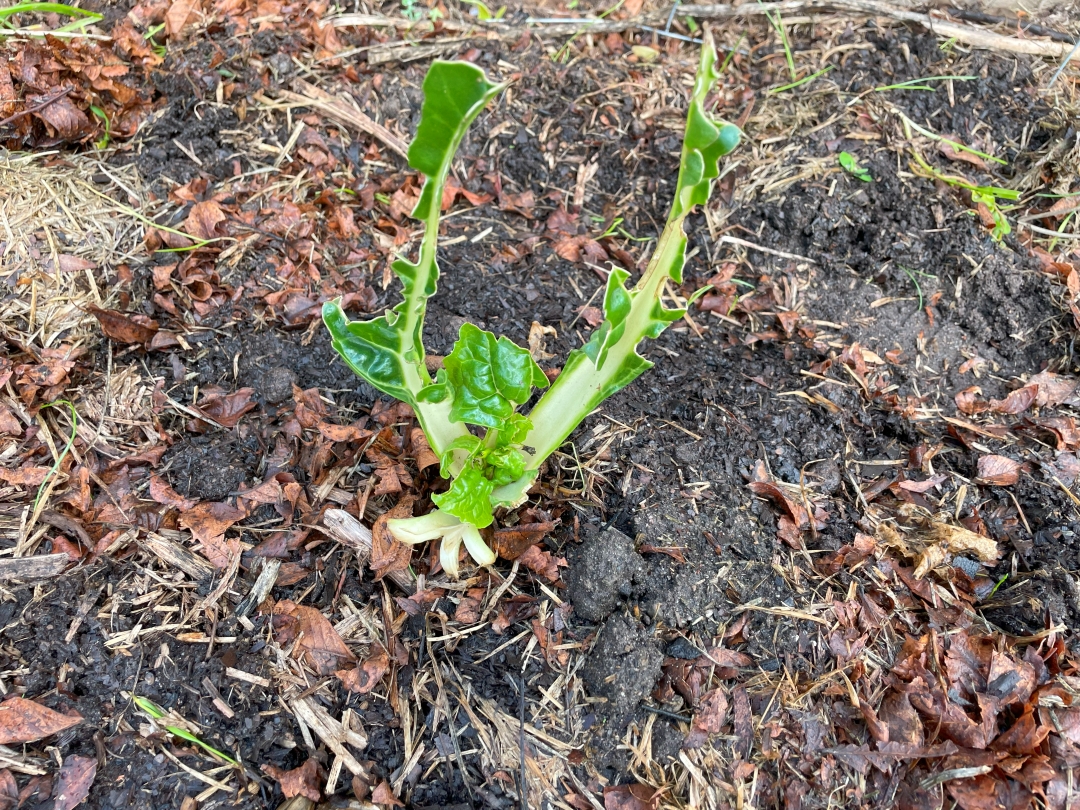Possums raiding my vegie patch

Possums raiding suburban Melbourne home vegetable gardens is a common occurrence. While they are native to our areas, both ringtail and brushtail possums are in larger numbers than they would have been pre-colonisation – and they have less to eat in winter.
The clearing of larger eucalypts and other indigenous trees means fewer predators such as large owls because there are so few breeding hollows left. Possum numbers have swelled consequently. Where possums previously needed large territories to forage food in, the way we garden means that for some of the year, there is more abundant and nutritious food for them. Think about rose buds, fruit trees and soft fleshy foliage compared to strongly scented gum leaves and spiky thorny wattles.
To make matters worse for possums, the food is only abundant for part of the year. In areas where native vegetation has been replaced with gardens full of lawn and deciduous trees – in my garden that’s ornamental pears – there is far less for them to eat when the trees are bare. And there is far less produce that they want to eat in our vegie patches and fruit trees. Possums have evolved in places with evergreen trees, and can’t hibernate nor store food for leaner times.
In my garden each night the possums are obviously really hungry. They are hammering my brassicas and leafy greens. They are eating broccoli, silverbeet, parsley, spinach and cauliflowers down to the stem, they are nibbling on lettuces and my broad bean leaves. Sometimes, they have pulled whole small (but semi-established) plants from the ground.
What am I doing about it?
1. Planting more than I need
I’ve planted more seedlings than I need quite densely next to the fence (aka the possum highway). I’ve planted things they were eating already, especially hardy ones that grow prolifically and without needing any maintenance from me, including silverbeet and parsley. Hopefully these act as decoys from the other plants I want to protect.
2. Netting what I want to protect
While I’m willing to share some of my produce, I still want a harvest. I’ve protected two vegetable beds (away from the possum highway) using wildlife complaint netting that I have weighed down at the edges with old stakes. The possums haven’t found their way in – well, not yet! Next year I will succession plant these decoys initially, so I can protect the seedlings until they are big enough to survive and supply an ongoing possum food rather than them killing seedlings immediately. I need to find (probably build) a way of protecting my broad beans, but I’m hoping some hang in there this year until my deciduous trees are in leaf again and the possums have something else to eat.
3. Planting more evergreen natives
I’ve been planting local native fast-growing vines along the back fence line (possum highway), and various other fast-growing large shrubs to try and provide more possum food during the cold months. Possums are reluctant to come to the ground, so if they can get a feed without coming to the ground they will avoid it.
4. Tackling rats
Possums often get blamed for rat damage, especially on winter citrus (if your lemons are missing their peel it’s highly likely to be rodents rather than possums). I don’t think I have a large rat population anymore, but I know there are still some, so while food is lean they are much more likely to take the bait in my traps. I’ve previously written about how I deal with them in my garden. I’m willing to share some of my produce with native wildlife, but certainly not with rats.
What I’m not using:
1. Motion-activated alarms or lights nor those owl decoys you see at the big hardware chains to try and scare them off. Online research suggests that none of those are viable long-term plans and possums aren’t stupid.
2.‘Possum-deterrent’ sprays or smells. I’ve previously unsuccessfully tried home remedies (chilli and garlic) and commercial sprays, hung moth balls and stockings full of dog fur, and even sprinkled blood and bone.
3.Possum traps. While you can hire these traps, many people don’t realise that possums are a protected species (as is all native wildlife unless you have a permit to cull). If you trap a possum you must release it within 50 metres. This makes trapping them entirely useless (unless they are nesting in your roof and you plug their entry while they are in the trap).
I realise my solution is hardly ideal, but I’m pragmatic about the situation and feel for the hungry possums. And besides, beyond building a fully enclosed vegetable garden cage, I don’t know what else I can do!
Words and photos by Jen Willis
